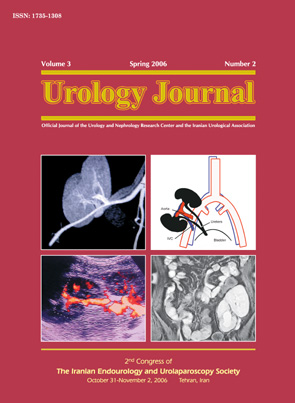Prediction of Successful Sperm Retrieval in Patients with Nonobstructive Azoospermia
Urology Journal,
Vol. 3 No. 2 (2006),
1 March 2009
,
Page 92-96
https://doi.org/10.22037/uj.v3i2.202
Abstract
Introduction: Our aim was to evaluate the predictive values of factors that indicate successful sperm retrieval in men with nonobstructive azoospermia.
Materials and Methods: We evaluated 85 infertile men with nonobstructive azoospermia who underwent multiple bilateral testicular biopsies. Factors including age, infertility period, surgical history, testicular volume, testicular consistency, serum follicle-stimulating hormone (FSH), serum inhibin B, serum luteinizing hormone, and serum total testosterone were assessed in relation to sperm retrieval results.
Results: Spermatozoa were retrieved in 18 biopsies (21.2%). Follicle-stimulating hormone, serum inhibin B, and testicular volume were associated with the results of sperm retrieval. Men with a higher testicular volume, a higher serum inhibin B, and a lower FSH had successful sperm retrieval. The cutoff points were determined as 9.5 mL for testicular volume, 9.9 IU/L for serum FSH, and 39.8 pg/mL for serum inhibin B. These 3 factors had strong correlations with each other. The sensitivities and specificities were 88.9% and 94% for testicular volume, 97% and 83.3% for FSH, and 72.2% and 95.5% for serum inhibin B, respectively. The positive predictive value for a combination of serum FSH and inhibin B was 100%.
Conclusion: Serum FSH and serum inhibin B are useful markers for evaluation of the presence of sperm in patients with nonobstructive azoospermia. Inhibin B has a high specificity when combined with serum FSH and their measurements can be helpful in all patients with nonobstructive azoospermia before decision making for sperm retrieval.
How to Cite
- Abstract Viewed: 292 times
- PDF Downloaded: 252 times
